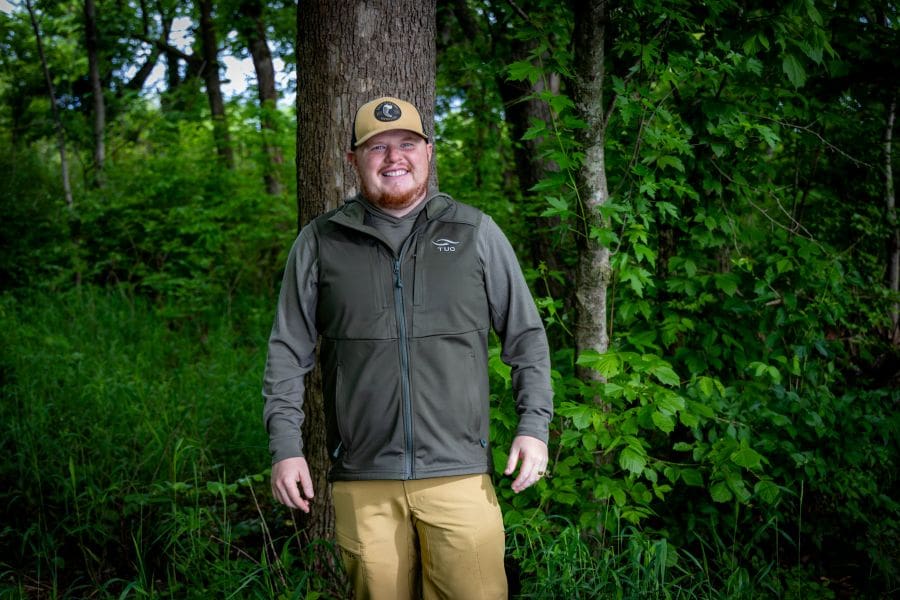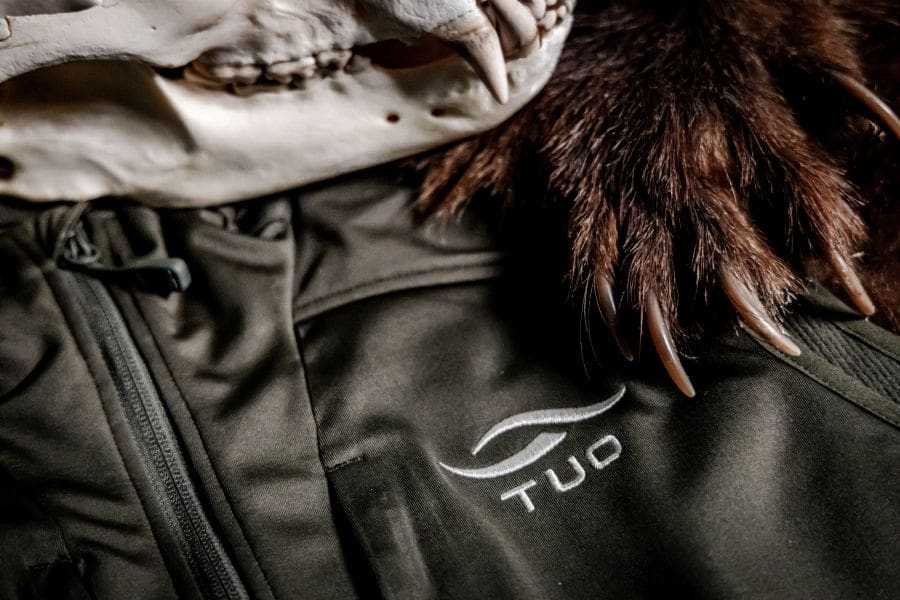It’s difficult to plan out exactly what you’ll need when hunting Ursus americanus in the spring on a Western-based hunt. Conditions in the mountains can vary drastically from one drainage to the next and depending on your elevation. Your favorite weather app will fail you time and time again when trying to plan a hunt.
When building a spring bear kit, you need to have your bases covered and understand your preferences and needs. Staying warm and dry is important, but—like with any hunt—comfort can help make the general suck of the conditions more ‘bear’able.
Base Layer
My motto for any hunt is always to prioritize merino wool next to skin. I usually run 250-weight bottoms because I tend to wear out 150-weight with friction from rucking. I don’t mind wearing a lighter 150-weight top base layer, but I prefer one with a hood. I’ve learned that whether it’s hot or cold, I like a hood—either to protect me from the sun or from cooler elements, especially when glassing. I never take my base layers off because… TICKS!
Mid Layer
My mid-layer pants vary depending on the weather I’m expecting. When wearing a 250 base layer, I like the breathability of a full merino pant. This changes with a fall hunt, where bears might be in berry patches, but for a spring hunt, we’re more focused on grass and new growth during green-up.
For the top, I like wearing a hybrid-style jacket. I want warmth in the right areas and breathability in others—especially when I’m packing a lot. If the weather is going to be cooler, you might consider switching the hybrid jacket for a softshell.
Outer Layer
If you’ve ever watched A Christmas Story, you’ll remember the kid with so many layers he couldn’t put his arms down. For this reason, I’ve become a fan of wearing a vest. It allows for dexterity while keeping your core warm. If it’s really cold, I’m a big fan of heated vests. That said, you should always keep a puffy jacket on hand—it’s highly packable insulation.
The Outer Shell
I’ve been on hunts where it goes from a beautiful, summer-like day to a freak sleet shower in minutes. Other times, it’s calm at camp, but once you reach your glassing spot on a ridge, you get slammed by wind gusts. Either way, on any spring bear hunt, there will be times you’ll wish for shelter from the elements. Make this note to yourself: “Always take rain gear!” It adds insulation, too—so it’s a net positive.
Accessories
Accessories are optional, but here’s what I bring:
I wear gaiters for brush and as an extra barrier against ticks. I like softshell gloves for glassing and a neck gaiter for added warmth or face protection. Many states require blaze orange for spring bear hunts, so an orange hat is a good idea—even if you just strap it to your pack.

Spring Bear Kit
Base Layers
- Kinetic Merino 250 Base Layer Bottoms (Deadfall)
- Kinetic Merino 250 Hoodie (Deadfall)
Mid Layers:
- Vision Hybrid Jacket
- Velocity Merino Pant (Deadfall)
- Clime Pant (Brome)
Outer:
- Aptitude Softshell Vest
- Molten Heated Vest (Colder Forecast)
- Clement Puffy Jacket
Shell:
Accessories:
